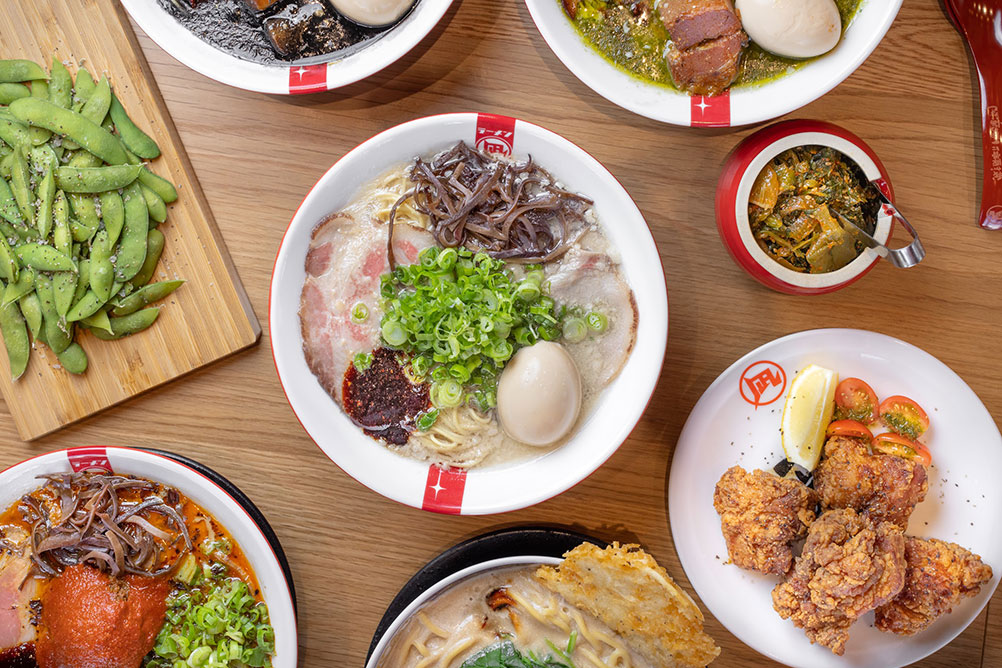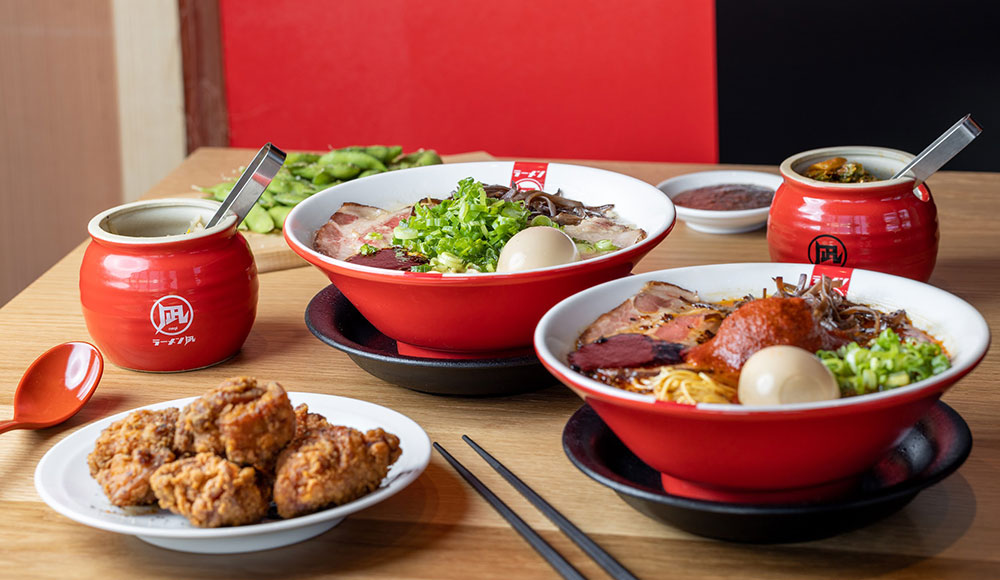After spending two weeks in bed with a wintry flu, my first foray back into public life was an outing to find some soup. Specifically, a bowl of hot ramen noodles. Rewatching Juzo Itami’s ramen-centric film Tampopo (1985) might have had something to do with the inspiration.
I met a friend at Ramen Nagi’s Palo Alto location, where—from the time we arrived, throughout our meal, and up to our departure—the line remained at exactly the same length. My friend’s son had repeatedly given up on the wait line at the restaurant’s Santa Clara location in the Westfield Valley Fair mall but he was happy to hear that his mom would be giving it a try.
Inside, the dining room is demarcated with tall open beams of blond stained wood. They help to make the space feel cozy rather than cramped, as does the wall of outward-facing windows. The tables are thick and sturdy, expressly made to insure against easy spillage. Bold red and black noren, or flags of fabric, hang down from the ceiling. They suggest privacy between tables without actually providing any. Seats at the back of the restaurant have a clear view of the cooks assembling bowls of soup in the busy kitchen.
A brand ambassador dropped by our table to explain Ramen Nagi’s approach to the making of broth and noodles. Chef Satoshi Ikuta started his international restaurant chain as a pop-up in Tokyo at a friend’s bar. Now there are five locations in California as well as many other international ones. The chef divides his time between Japan and California, where he has a home in Palo Alto. The Palo Alto location is also a production and distribution hub for the noodles and the broths.

On Ikuta’s streamlined menu, there are only five regular ramen choices—original, red, green, black and veggie—with a seasonal sixth option that’s made on a limited run. Ramen Nagi keeps the ingredients of the special a secret until it launches. The green option is an Italian fusion dish that combines basil, olive oil, parmesan cheese and the original tonkatsu broth. It’s meant to demonstrate the Japanese interpretation of Italian cuisine. The black version is thickened and colored with squid ink.
All of the ramen choices are customizable. The waitstaff brings a piece of paper to the table and a pen for diners to choose the desired broth, the type of noodle (thin or thick), the type of cook on the noodle (firm to soft), two pork choices (chashu or belly), and the levels of oil, salt and garlic. Extras include cabbage and an egg. But all versions come with green onions and tree mushrooms.
I opted for the original pork broth while my friend chose the red broth spiced with garlic, chili oil and cayenne pepper. I ate, drank and slurped down the entire bowl of ramen set in front of me. There really is nothing more soothing on a sore throat than hot broth and slippery noodles. My friend’s red ramen was served with a giant meatball made of miso-infused minced pork. She had trouble finishing it.
We also shared two appetizers, a fried chicken karaage and some gyoza connected by a lacy skein of crispy skin. Ramen Nagi’s karaage is also worth the wait in line. It’s served hot from the fryer, crunchy and perfectly salted.
Ramen Nagi, 541 Bryant St., Palo Alto. Open daily 11am–2:30pm and 5–9pm. IG:@ramennagiusa. ramennagiusa.com.



